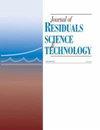The Preparation and the Release Properties of Nanometer Titanium Dioxide
引用次数: 1
Abstract
Nano titanium dioxide (TiO2) was synthesized by using butyl titanium as raw material with sol-gel method and assisted with ultrasound. The products were characterized by X-Ray diffraction (XRD), Fourier transform infrared spectrophotometry (FTIR). The effects of hydrothermal temperature, ultrasonic time, ultrasonic power and acetic acid dosage were all investigated, and the optimal conditions for the crystal of nano TiO2 were acid dosage 8 mL, temperature at 40°C, extration time 50 min and the ultrasonic power 240 W. A series of drug release experiments were employed in vitro, we found that the maximum drug loading rate reached 67.30%. The results reveal that nano TiO2 is a promising biomedical nanomaterial in the application of drug loading system.纳米二氧化钛的制备及其释放性能研究
以丁钛为原料,在超声辅助下,采用溶胶-凝胶法制备了纳米二氧化钛(TiO2)。采用x射线衍射(XRD)、傅里叶变换红外分光光度(FTIR)对产物进行了表征。考察了水热温度、超声时间、超声功率和乙酸用量对纳米TiO2结晶的影响,得出最佳工艺条件为酸用量8 mL、温度40℃、提取时间50 min、超声功率240 W。通过一系列体外释药实验,发现其最大载药率可达67.30%。结果表明,纳米TiO2是一种极具应用前景的生物医学纳米材料。
本文章由计算机程序翻译,如有差异,请以英文原文为准。
求助全文
约1分钟内获得全文
求助全文
来源期刊

Journal of Residuals Science & Technology
环境科学-工程:环境
自引率
0.00%
发文量
0
审稿时长
>36 weeks
期刊介绍:
The international Journal of Residuals Science & Technology (JRST) is a blind-refereed quarterly devoted to conscientious analysis and commentary regarding significant environmental sciences-oriented research and technical management of residuals in the environment. The journal provides a forum for scientific investigations addressing contamination within environmental media of air, water, soil, and biota and also offers studies exploring source, fate, transport, and ecological effects of environmental contamination.
 求助内容:
求助内容: 应助结果提醒方式:
应助结果提醒方式:


